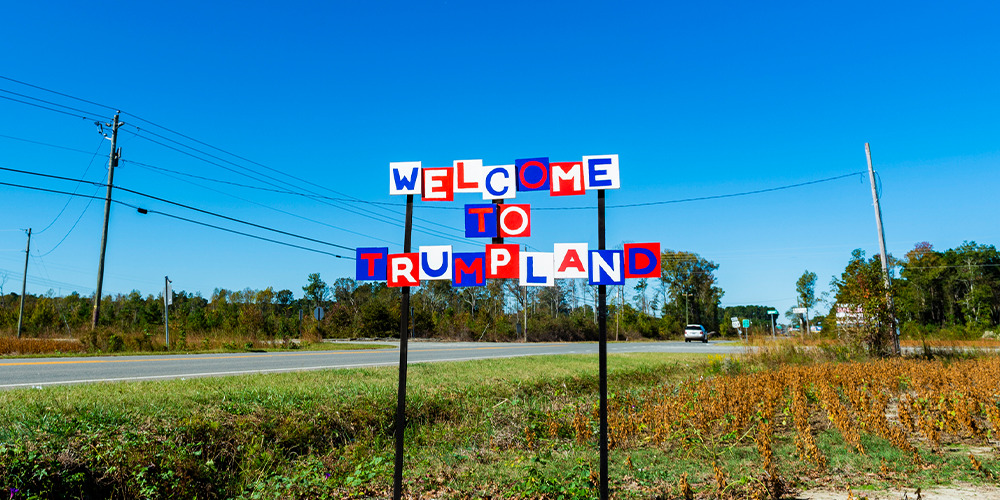In the trade negotiations with the US, Japan’s chief negotiator will not threaten Scott Bessent, US Treasury secretary, that selling Treasuries is an option Japan could consider. This is not because he cannot. It is because Japan’s elite knows full well the only reply this will trigger is the same as then Treasury Secretary John Connally gave to the G10 in August 1971, moments before the break-up of the Bretton Woods global financial system: ‘It’s our dollars, and your problem.’
You may accuse Team Trump of a lot of things, but lack of confidence is not one of them. And the more ambitious, old-school mercantilist, anti-free-market, anti-American factions of Japan’s elite cannot help but secretly cheer on the consistency and aggressiveness with which President Donald Trump is trying to break up not just the equilibrium, but the governance of global free markets.
Japanese private and public investors are cutting their US investments. This is not because of the usual tactical reasons – a change in the Federal Reserve’s policy expectations – but because strategic asset allocators and fiduciaries are urging the stewards of pension and insurance assets to reconsider the longer-term risk profile of ‘safe’ US Treasuries. Jamie Dimon, chief executive officer of JP Morgan, put it politely: the trade war risks eroding US credibility.
To put it in more blunt financial terms: global creditor nations, like Japan, will demand a growing ‘discount’ before buying US assets. Why?
Let’s take Team Trump by its words. After barely 100 days in office, it is crystal clear they want to engineer a fundamental change in how America interacts with other nations. The long-established covenants and coordinated governance of global trade and finance are being ripped apart from its very centre.
For Japanese and all global stewards of capital, the question is not whether this will be a good thing or a bad thing in the long run. The immediate question is how to manage the new risks now forced by this transition. Clearly, the risks of this experiment not working out or being sub-optimal to the previous one are not zero.
Investors will demand more compensation
Japanese investors are patient, but like all investors the longer the ‘end game’ remains elusive and Team Trump refuses to present a consistent and credible plan of what the new covenants and governance of the next global system should look like, the greater the compensation they and all global savers will demand from US assets.
‘Moving fast and breaking things’ is not a model global fiduciaries can adopt. Long-term capital needs prospects of long-term stability to thrive. Predictability and logic are essential.
The risks of owning US assets are going up, so the world will want to be paid more for owning them. This means higher US bond yields, lower valuations for US equities and, of course, a lower dollar. This is the ‘Make America Great Again discount’.
An added consideration is the basic linkage between trade and capital flows. Yes, the US has the world’s largest and deepest capital markets. The mirror of the now super politicised US trade deficit is the US capital account surplus. A significant part of this surplus is the recycling of global exporters’ profits from selling to Americans, a real-world liquidity boost to US capital markets and an important force making US financial firms the dominant (and most profitable) in the world. Now that tariffs will undercut global exporters’ sold-to-Americans profits, this recycling of liquidity will dry up.
Simply put, if Toyota cannot earn US dollars anymore, its deposit balances at JP Morgan and other US banks will drop, which in turn means reduced funding for US financial intermediaries, which means they will have to cut their US assets and Treasuries.
Make no mistake: the linkages between global trade, the global savings glut that free trade enables and US financial assets having enjoyed a ‘premium’ over the past decades are the real risks Japanese and global stewards of capital are now forced to price for.
Importantly, the question is not the always topical ‘are Japanese or Chinese investors selling, and if so, how much?’ More important is at what price/yield they will be prepared to come back to US markets.
Today, it is impossible to know how high the MAGA discount will have to be. All we do know is that it will continue to rise until we get a new mutually agreed covenant on how sovereign nations are to interact with the US. Until then, the most likely ‘safety valve’ is poised to be significantly weaker US dollar.
Jesper Koll is Global Ambassador and Expert Director, Monex Group, Japan.
Join OMFIF on 24 June for the launch of Global Public Investor 2025.
Interested in this topic? Subscribe to OMFIF’s newsletter for more.

